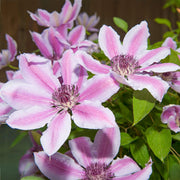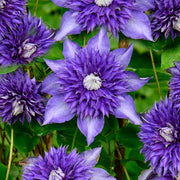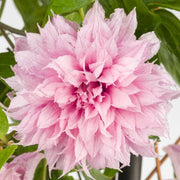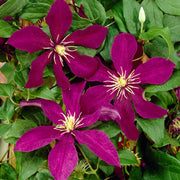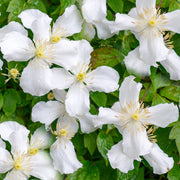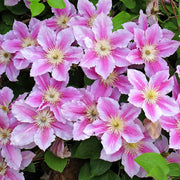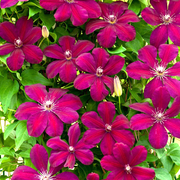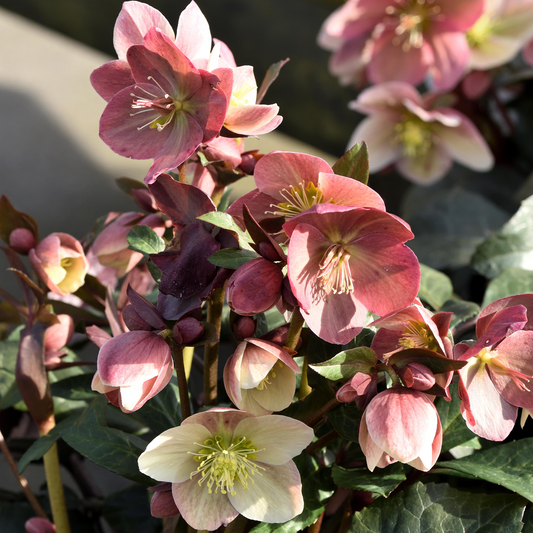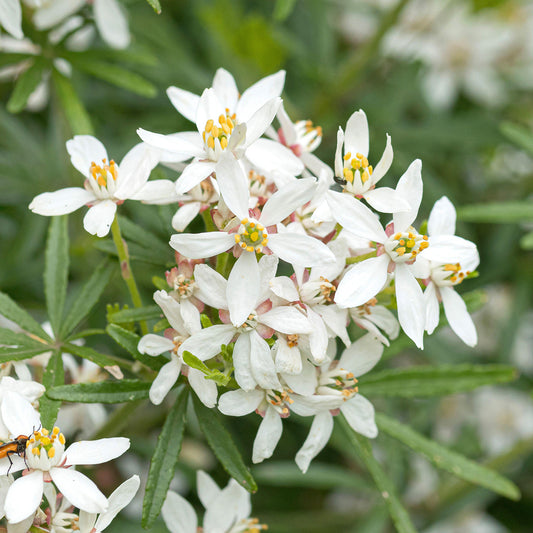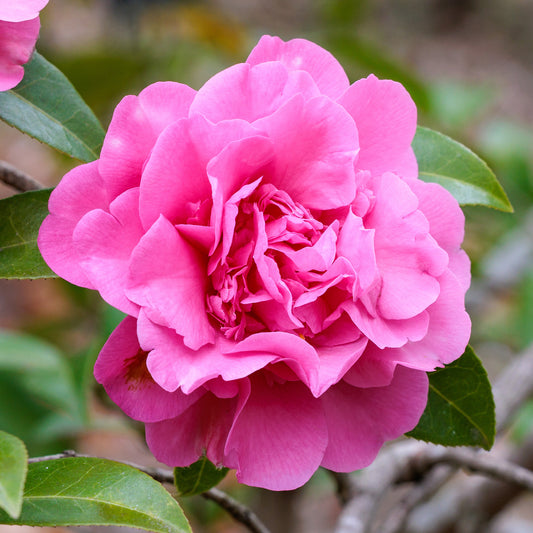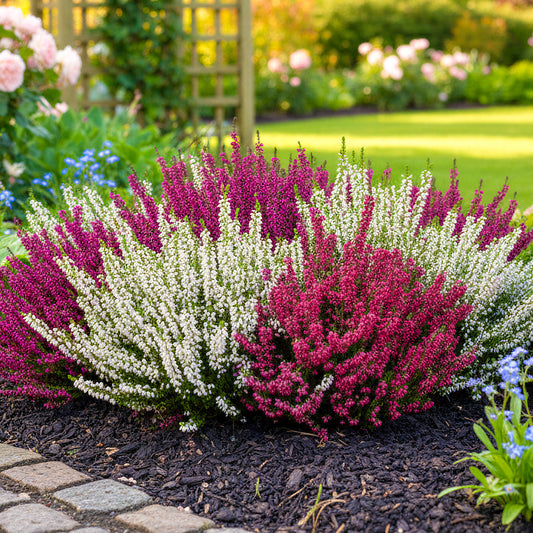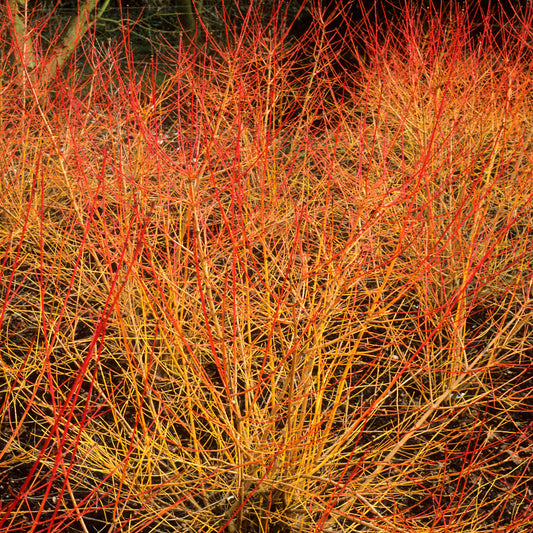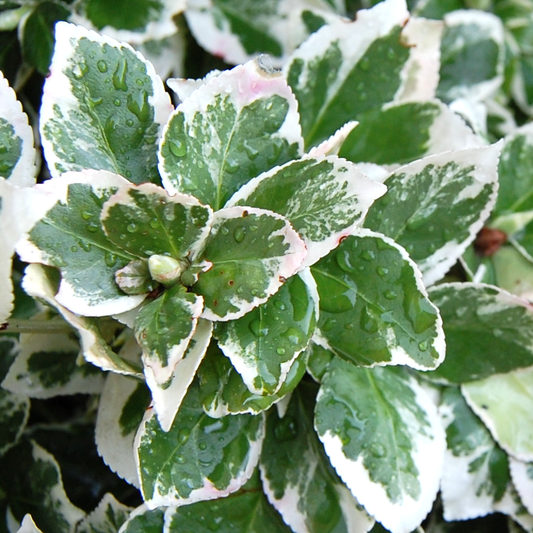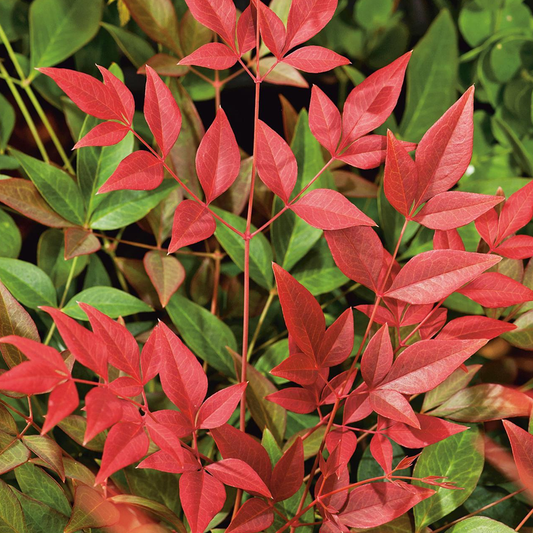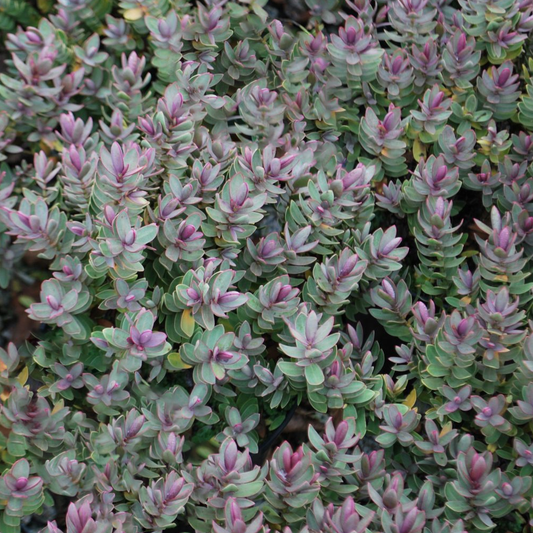Product description
Clematis can be deciduous or herbaceous perennials, mostly climbing by twining leaf-stalks, and often with showy flowers. Some have attractive fluffy seed-heads in autumn
Early Large-flowered clematis have large star-shaped flowers in early summer, often with a second flowering in late summer
Garden Plant Size Guide

Plants in larger pots can be multiple years older than their smaller counterparts with more mature root systems and foliage. This makes them able to thrive as a full size plant in your garden quicker than smaller alternatives.
The most common size of pot that garden plants come in are 9cm/1L/3L/5L this is in reference to the diameter at the top of the pot.
9cm potted plants still remain the most popular cost effective option though, they just may take a little patience to allow them to grow into full maturity once planted in your garden.
Plant specs, care guide & tips
Key features
When to plant
| Jan | Feb | Mar | Apr | May | Jun | Jul | Aug | Sep | Oct | Nov | Dec |
|---|---|---|---|---|---|---|---|---|---|---|---|
Planting and period of interest times are general guidelines and may vary based on your location and conditions. For best results, consult local gardening resources.
Instructions
Top Tip
Clematis are long-living plants that don’t like to be transplanted, so choose your spot carefully and don’t move them unnecessarily.
How to Water
Water regularly throughout the first few growing seasons to keep the soil evenly moist but not saturated. Once established, clematis is relatively drought tolerant and only needs to be watered during particularly dry spells.
How to Plant
Clematis flowers best when planted in full sun or light shade in fertile, moist but well-draining soil. Prepare the soil by weeding the area thoroughly and adding plenty of well-rotted organic matter. Dig a generous hole and position the plant so the top of the root ball is around 5cm below soil level. Backfill the hole with soil and compost, firm down gently, and water in well.
Find out more on how to grow Clematis.







